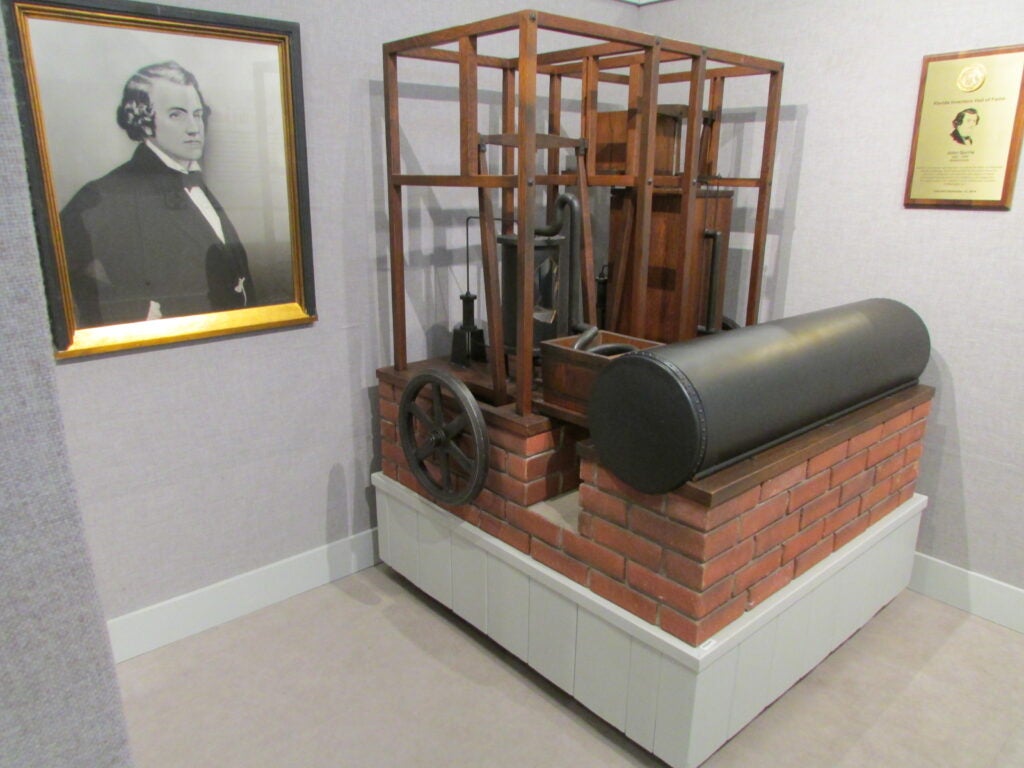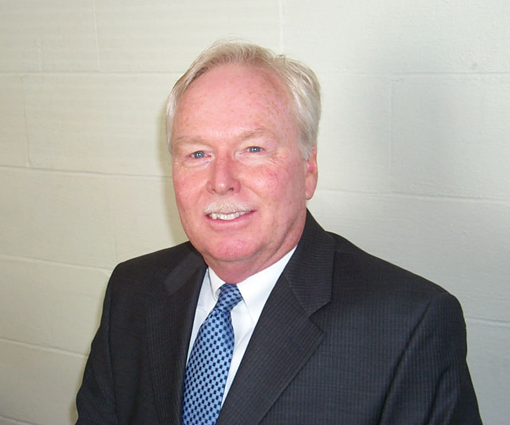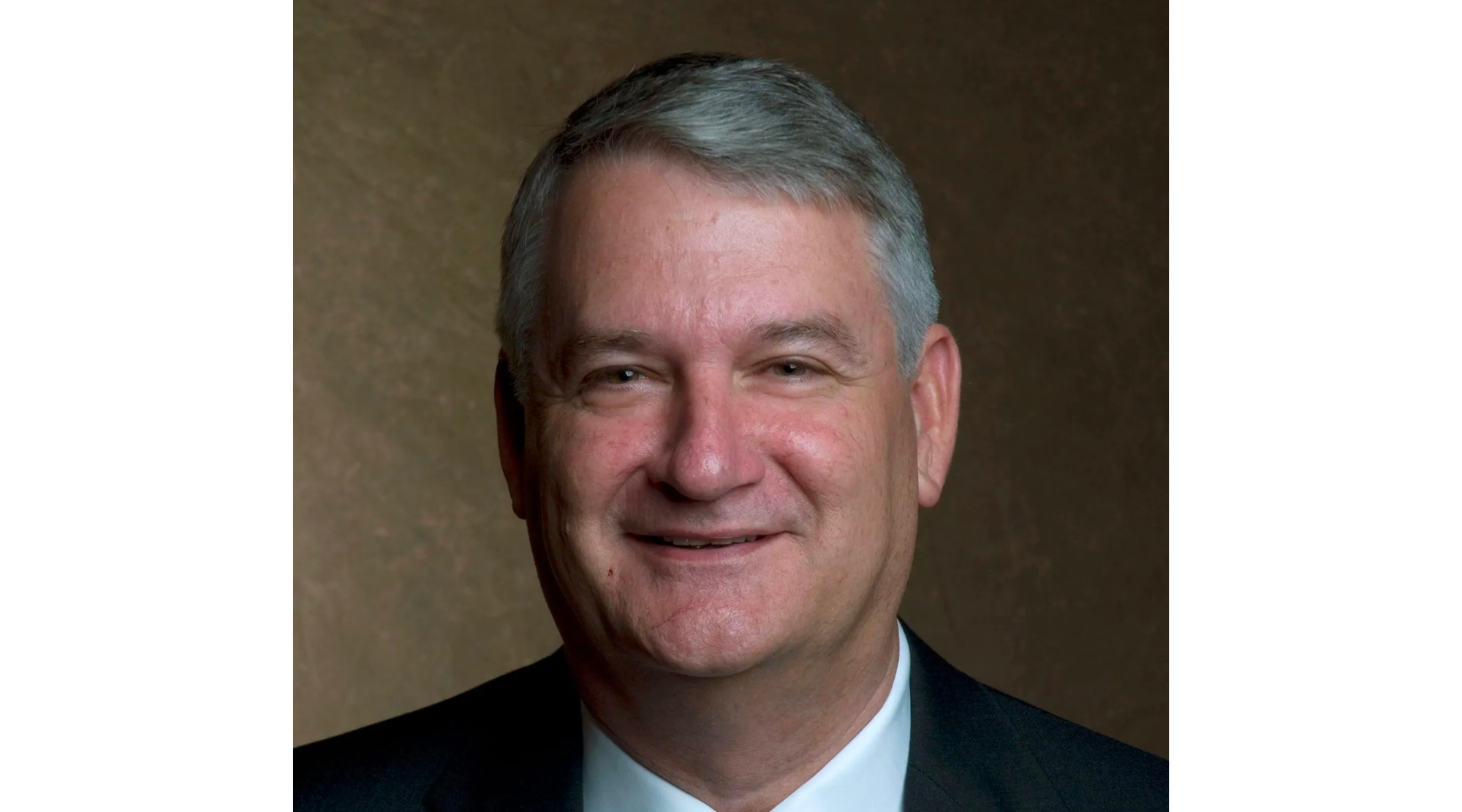Ops! I Fell into Florida-the Ice Machine
Published 1:53 pm Sunday, April 14, 2024

- A replica of Dr. Gorrie’s invention, the ice machine. The original is in the Smithsonian Institute.
|
Getting your Trinity Audio player ready...
|
He started out innocently enough. Being a doctor, the survival of his patients was his main concern. However, with Dr. John Gorrie’s move to Apalachicola in 1842, it brought him face to face with the dreaded Yellow Fever epidemic. This fearful disease was also called the Red Heat, the Yellow Jack or Black Death because near the end of the patient’s life, he would throw up black vomit which was caused by the decayed blood, which accumulated in their stomach.
While this epidemic seems to have a variety of colorful names, there was no pot of gold at the end of this rainbow. It didn’t matter what it was called, Dr. Gorrie felt that the only way to approach this deadly fever was to cool down those that were suffering. He also felt that this would lead them to being cured.
Are you ready to go on a journey of discovery? We can take some cool water and perhaps soda crackers (good for an upset stomach). However, I would not recommend too much food.
John Gorrie was born on October 3, 1803, in Charleston, South Carolina. Shortly afterwards, his family moved to Columbia, South Carolina, where he grew up. He attended the College of Physicians and Surgeons of the Western District of New York, in Fairfield, New York, from 1825 to 1827.
Dr. Gorrie initially set up his medical practice in Abbeville, South Carolina, in 1828. After his father’s passing in 1831, Dr. Gorrie and his mother left Abbeville and traveled across Georgia to Columbus. There they boarded the steamboat, “Georgian”, and came down the Chattahoochee River. They got off at Chattahoochee, Florida, which was then called, Mount Vernon, and journeyed over into Jackson County. Here, they settled on a high hill, north of present day Sneads. After only a short time living there, his mother died. She was buried in Rowe Cemetery, which is now under Lake Seminole.
After a few years, in 1833, Dr Gorrie felt he would be more useful in a larger town. This is when he traveled down the Apalachicola River, to the growing cotton port of Apalachicola. Here he set up his practice. What he found was that there was more work for him because this area had many folks sick with fever. He treated them with the only medicine that maybe could cure them, quinine jalap and Senna root. This was during the time when fever was considered a disease, rather than a symptom.
Dr. Gorrie supplemented his income by having a side hustle. He became postmaster in 1834 and a notary public in 1835, He served as vice mayor in 1836 and mayor in 1837.
Loving this town, Dr. Gorrie became actively involved in its development. He became the chief physician for the Marine Hospital Service, from 1837 to 1844. Also in 1837, he became active in the founding of the Trinity Episcopal Church in Apalachicola. He also was a partner in the Mansion House Hotel.
On May 8, 1838, he married Caroline Frances Myrick Gavin from Marianna, Florida. She was a widow and owned the Florida Hotel in Apalachicola. Even though he was involved with many activities, he never forgot that he was a doctor first and that his patients needed him.
Then, shortly afterwards, he resigned his various positions in Apalachicola and took his family back to Sneads to settle his mother’s estate. They returned again a year later, in 1840. In 1841, Dr. Gorrie was appointed Justice of the Peace. This was the same year that the Yellow Fever hit this area very hard. Again, Dr. Gorrie sent his wife and their new baby daughter, Sarah, up river to Sneads, to keep them safe from the fever.
This was not a year that the residents of Apalachicola want to remember, let alone relive. During this time, over four hundred folks were known and so many more were unknown, that had died in Apalachicola when this Gulf port town of Florida, one of the most important seaports, reeled under the annual reoccurrence of the diseases of Yellow Fever and Malaria. Dr. Gorrie was now obsessed with learning how to control these fevers and worked devoutly caring for the patients suffering in two regional hospitals.
The reoccurrence of these illnesses during the months of soaring heat and humidity led him to believe that it was possible that the cause might be airborne bacteria from decomposing vegetation. Capitalizing on the good will he had earned among this fellow citizens, he constantly tried to get them to drain the swamps and use mosquitos nets to filter out of the air those poisons which he believed were causing the sicknesses.
Whenever he could spare a moment, he shut himself in the laboratory he had built attached to his house. Here he kept researching for a means to dry and cool the air in his patients’ rooms, in hopes of controlling their fevers. Dr. Gorrie’s concern for patients stricken with Yellow Fever led him to develop a method for cooling their rooms, the invention of a machine that produced ice. You can imagine how surprised he would be if he knew that he had laid out the ground work for modern refrigeration and air conditioning.
The success of his invention proved itself on a hot June afternoon, in 1842. Normally shy and reserved, the doctor recognized that what he had accomplished could have far reaching effects. Eager to share the news, he rushed to find his friend, Dr. Alvin Chapman, who was mixing prescriptions in his dispensary. Dr. Chapman was one of the few people who knew about Gorrie’s search for a way of reducing a patient’s temperature. Dr. Gorrie then told this friend about how he had discovered how to make ice.
During his experiments with cooling the air, Dr. Gorrie had accidentally produced small blocks of artificial ice. Although benefitting patients had always been his primary concern, he realized there could be other, as of yet, undreamed of possibilities in the making of ice. Someday, he predicted, foods could be frozen solid to preserve them. An improvement over salting, pickling and drying, which were then the only means of food preservation at this time.
The machine consisted of two compressor pumps: one to compress air and the other to expand it. Both pumps were powered by steam, with a storage chamber in between, to feed cool air through pipes into the patients’ rooms. When the cool air passed around a container of water, ice formed.
Also, since about 1805, New England ship owners had chopped ice from lakes and rivers in their region, loaded it into insulated ships and sold it to southern cities. The large cities built huge, insulated vaults to store the blocks of ice. Unfortunately, after stops in Savannah and Charleston, the ships were sometimes empty by the time they reached the docks in Apalachicola, if they arrived at all. His invention could mean that anyone would have access to ice.
When the news of Dr. Gorrie’s work began to spread, it was looked upon as the beginning of several troublesome events that would impact shipping from New England to Florida. Also, some local folks felt that if the Lord had intended Florida to have ice, he would have put it there.
With Yellow Fever subsiding, Dr. Gorrie now brought his family back down to Apalachicola. Unfortunately, by September of 1843, the fever was back and in epidemic proportions. With Caroline close to delivering their second child, he once again sent his family back up river on the steamboat, “Louisa”, to Sneads to get them away from the rampant diseases. While docked at Chattahoochee, aided only by her nurse who traveled with her, Caroline gave birth to their son, John Myrick Gorrie, on September 7, 1843.
Dr Gorrie continued to perfect his invention and submitted his patent petition on February 27, 1848, three years after Florida became a state. In April of 1848, he was having one of his machines built in Cincinnati, Ohio, at the Cincinnati Iron Works. Then, in October, he demonstrated its operation. On August 22, 1850, he received a London patent and on May 6, 1851, his United States patent.
Now Dr. Gorrie needed to begin a search for financial backing. He had exhausted his own funds and those of his wife, in his research. Northern shippers spread the word that the ice machine was a fake and their scheme worked. No backers came forward, except one. Unfortunately, he died suddenly and by some strange legal twist, Dr. Gorrie was declared legally responsible for the backers debts as well as his own.
Dr. Gorrie really never thought about the money his invention could bring. Discouraged and heart broken, he retired to his home, forgotten by everyone but his family. During this time, Gorrie wrote about the process he had invented and the making of the ice machine. He used the pen name of “Jenner”, as a tribute to Edward Jenner, who discovered the vaccine to stop the spread of small pox.
With his depression deepening, his immunity to diseases became low. Ironically, Gorrie himself, was stricken by a fever. Only, just two years later, Dr. John Gorrie died on June 29, 1853. He is buried in the cemetery at Gorrie Square. It is so sad that he would never get to market his invention and see what it had turned into and what his invention led to.
Five years later, a Parisian “friend” tried to claim that he had invented the ice machine. However, it was very well known that he was not the inventor but had stolen Dr. Gorrie’s ideas.
Sometime in 1860, the Gorrie house burned down and all of his records were lost. At this time, his family had moved to Marianna, where Caroline had family. She died there in 1864.
Dr Gorrie and Caroline’s son, John Myrick, served four years in the Confederate Army. He was injured and came home to Marianna. He passed away in 1866. His sister, Sarah, died in 1908. Caroline, Sarah and John are buried at St. Lukes Episcopal Church in Marianna.
Several friends of Dr. Gorrie’s tried to keep his name alive. Then, in 1897, the Southern Ice Exchange funded a memorial for Dr. Gorrie. Each merchant donated proceeds from the sale of one ton of ice for a monument to honor the man to whom they owed so much. The faithful members agreed and the five-foot memorial was dedicated on April 30, 1900. On it is inscribed: A pioneer who devoted his life to the benefit of mankind.
Also, in the town of Apalachicola, Gorrie Square, which is in front of Trinity Episcopal Church, is named in his honor. It contains his grave site, the monument erected by the Southern Ice Exchange and the Dr. John Gorrie Museum.
Trinity Episcopal Church was another of Dr. Gorrie’s favorites. This white pine building is believed to be Florida’s first pre-fabricated structure. It was shipped in sections from White Plains, New York, to Apalachicola and completed in 1838. Early, active members of the church included inventor, Dr. John Gorrie and his best friend, Dr. Alvin Chapman.
Through the years, the ornately stenciled ceiling has never been repainted. The original bell was melted for a cannon during the War Between the States. The cushions and rugs from the church were used to make blankets and clothing for the soldiers. Today this church is on the National Register of Historic Places.
Befitting one of the nineteenth century’s great inventers, the original model of Dr. Gorrie’s ice machine is on exhibit in the Smithsonian Institute. In 1914, the doctor’s great granddaughter along with Florida Senator, Samuel Whitehead and members of the Southern Ice Exchange, were present at the unveiling of a marble likeness of this inventor and humanitarian, in the National Statuary Hall in the Capital building in Washington, DC.
Another thing that makes the placement of the Dr. John Gorrie Square so special is that his museum and Trinity Episcopal Church as well as the haunted Coombs House Inn are all together and can be visited all at one time because they are within walking distance of each other.
Next week. I will tell you about the haunted Coombs House Inn.





